The Article
DISCO-ANTISTAT ULTRASONIC FROM KNOSTI
24th October 2024
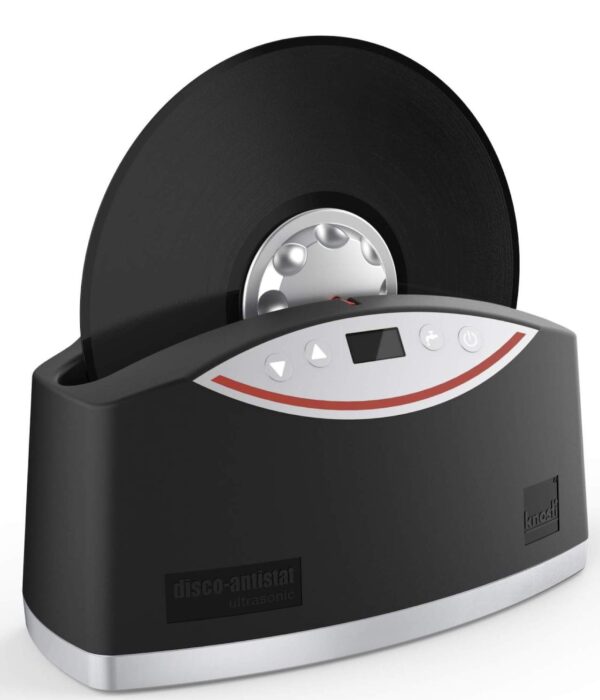
This compact, ultrasonic vinyl cleaner from Germany provides a competitive price but also a wealth of features
Ultrasonic technology is a highly effective method of cleaning vinyl. And I’ve tested – not all – but a fair few from the DIY, low-cost models to the specialist and very expensive designs to one or two that sit somewhere in between. All of them, in general terms, do a great job of cleaning records.
If I was to categorise the ultrasonic vinyl cleaners that are currently available to buy, right now, on the market, I would place them into two categories.
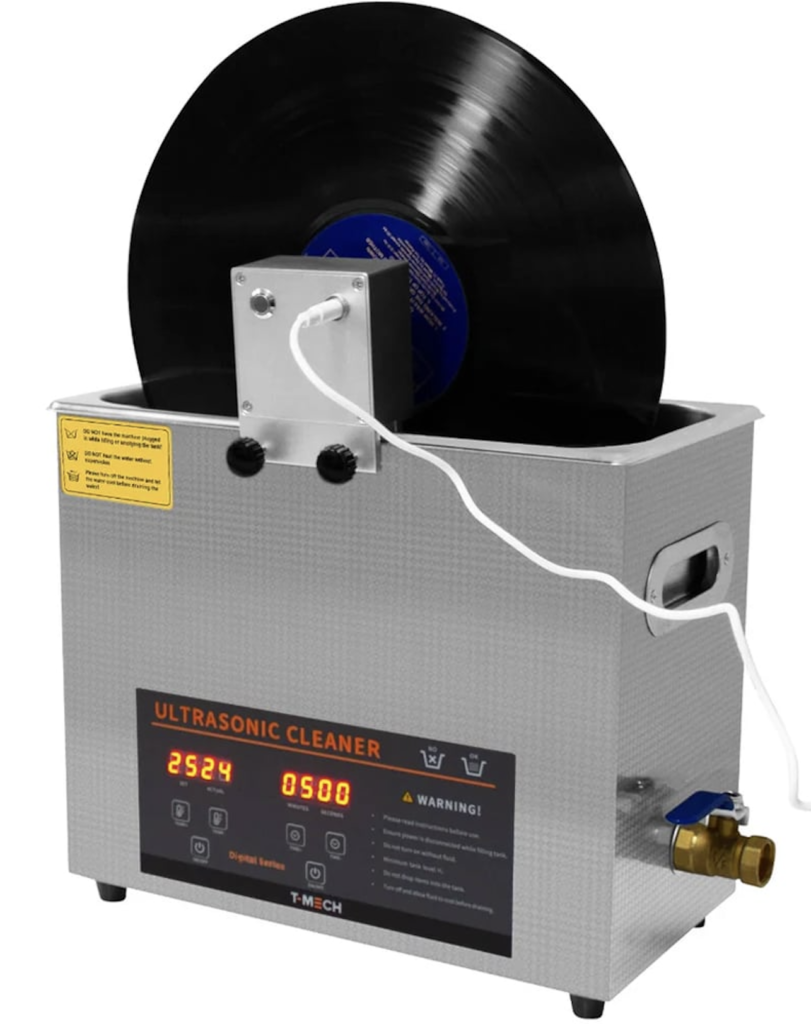
The lower cost models – in broad terms, there are exceptions – tend to be modded variants of general purpose ultrasonic baths. That is, designs based on ultrasonic bath that have been designed to clean jewellery, coins, your glasses and your false teeth, modded to clean vinyl. That is why they are low in price. Because there’s no development cost for those baths. They add parts to hold and rotate the vinyl and that about it, in broad terms.
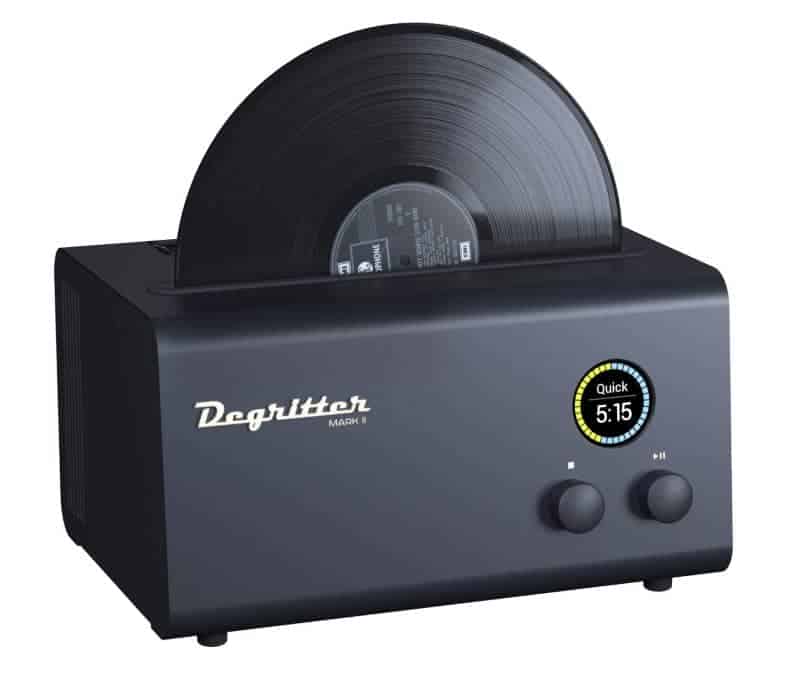
The high-cost models tend to be designed and built from the ground up to hold and clean vinyl and only vinyl. So the ultrasonic transducers, for example, are often placed on the sides of the chassis instead of on the bottom because that’s where you want the cavitation action to happen: on the sides, hitting the vinyl disc itself, head on as it where. Now, of course, there’s a lot more to it than just transducer positioning there’s filtering, transducer frequency types, the bath shape, possible drying cycles, how and why the disc is actually moved during cleaning and a lot more.
PRICES PRICES
Add the fact that ultrasonic vinyl cleaning machines are sold in limited numbers, so you get little or no help from economies of scale and it’s no wonder that these specialist bits of kit are high in price. The Degritter, for example, is available for just over £2,500 while another German offering this time the Audio Desk Pro is priced still higher at over £2,800.
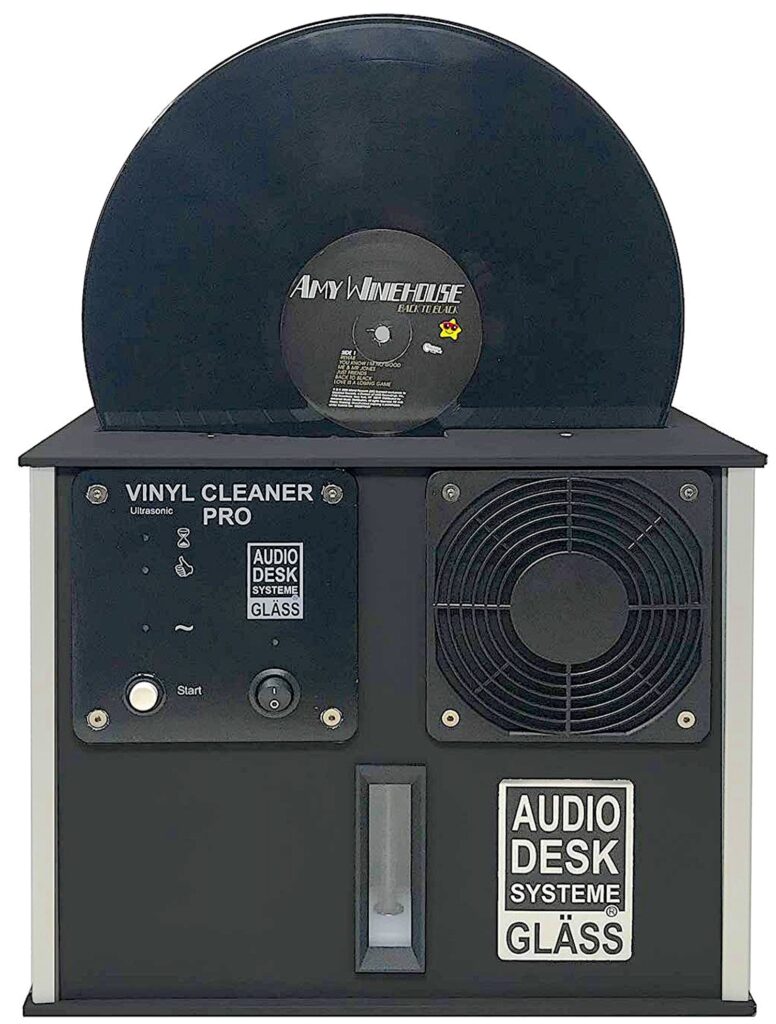
So, as you might expect, there has been a desperate search for a specialist ultrasonic cleaner, available at a much lower price. That search is finally, beginning to bear fruit. We have seen the recent release of the HumminGuru which is priced around £465 is it? This is a product I have not yet reviewed but hope to do so in the future – and, in addition to that, this example under review, from Germany and from Knosti, from the same people who produce the superb manual vinyl cleaner, the Disco Antistat.
Priced at €1,249 in Europe, I’ve seen various prices in the UK ranging from £1,149, to £1,059 from HiFi retailers to still lower still on eBay. So, shop around. Knosti is apparently in talks with US distributors so stay tuned for news on that.
And on that price note just be aware of low cost models out there, Knosti commented, “For anyone looking to buy an Ultrasonic in the UK, it’s important they check whether they are purchasing the updated version or the older one, as the previous model is still available on the market (and it is not the same)!” So if you see any cheap examples out there, ask questions before you buy!
TECH TOUR
Knosti’s Disco-Antistat Ultrasonic combines both internally-fitted ultrasonic technology plus its own famed goat-hair brushes, also fitted inside of the bath here to provide two types of abrasion to clean your vinyl. The chassis, which spans 360 x 180 x 235mm and weighs around 2.6kg with a bath full of cleaning liquid, has a look of the original Disco Antistat manual vinyl cleaner. You are even given a spindle clamp to protect your record’s label during cleaning, so there’s an additional family resemblance to this one.
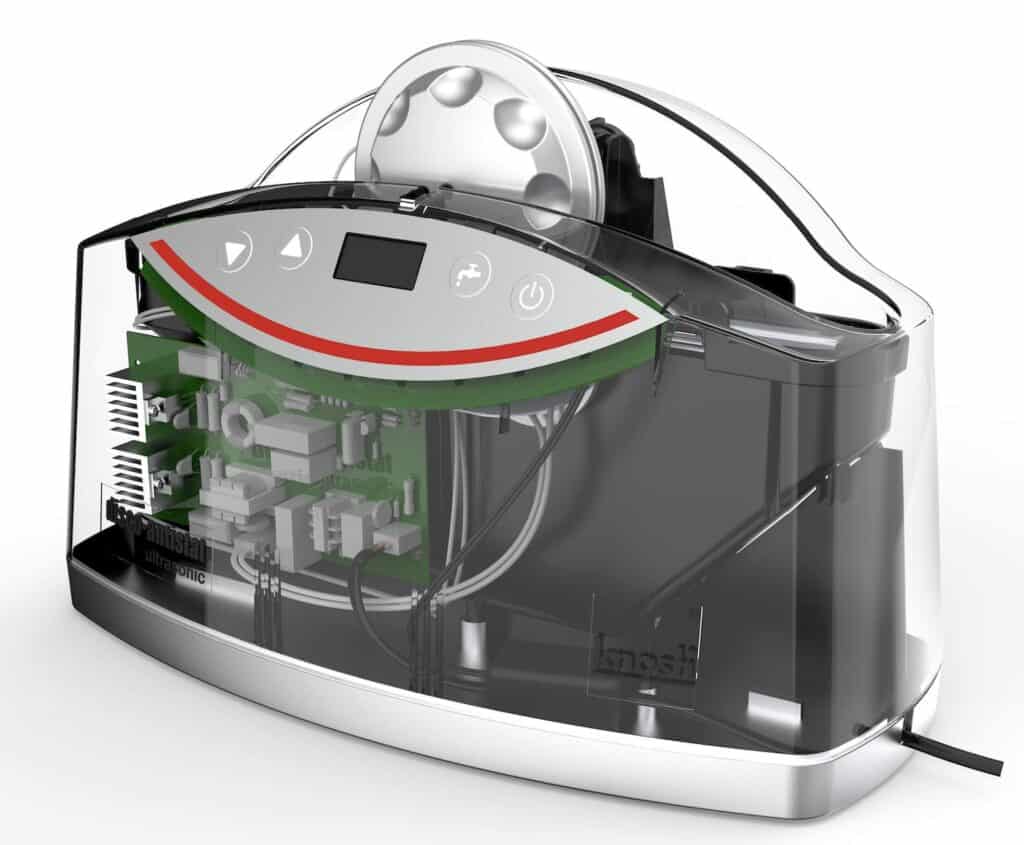
Before we do some actual cleaning, let’s take a quick tour around the chassis. First up is that very chassis which combines the cleaning bath and the interface. The ABS chassis is chunky and solid. There has been Internet criticism where some users of early models discovered cracks in the chassis but Knosti told me that they have since issued improvements so that problem should be a thing of the past.
Looking at the front of the chassis you will see a central information window. Small it might be but it does the job. This is where you can set the cleaning program up to a total of five minutes per cleaning cycle. Knosti recommend between 60 seconds and two minutes but I opted for five minutes every time. I felt that the increase in sound quality was worth it. That time can be altered via the two arrow button to the left of the window. To the right is a power button which you depress for five seconds to switch the unit on plus a drain button to remove the liquid from the bath, when required. Again, you press that button for five seconds to initiate the bath water draining.
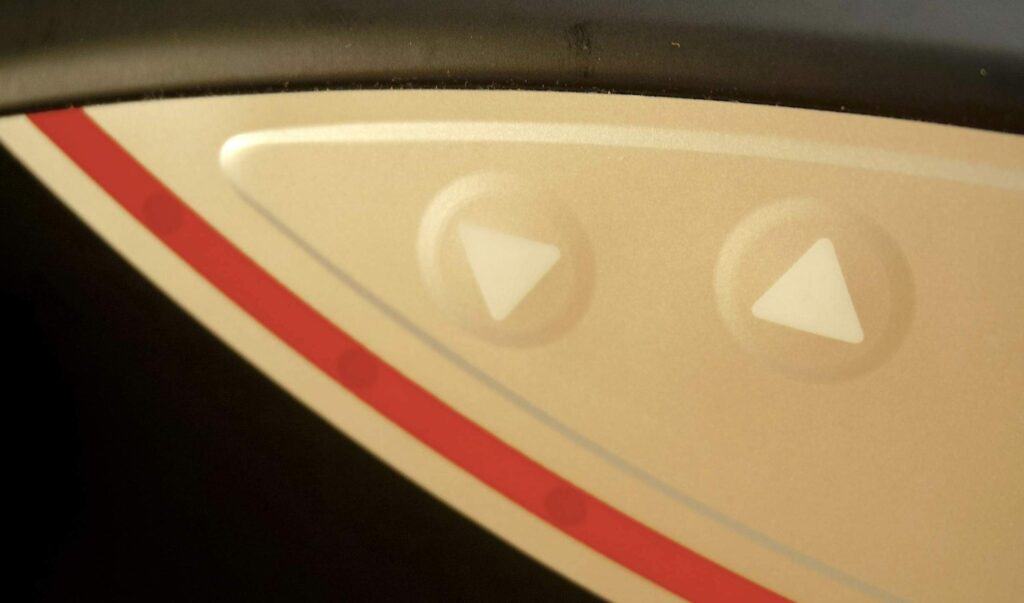
The opposite side of the chassis features a click-out hatch containing both the bath liquid drain tube and the cleaning filter, which keeps the bath water clean during operation. The filter can be removed, disassembled and itself cleaned under running water before being replaced back into the rear of the machine. The only other point of note is to the right of the Disco-Antistat Ultrasonic. That’s where you’ll find the power socket, a barrel connector, in this case.
ACCESSORY ACCESSORIES
Apart from the bath unit and power supply, in the box you will find a pair of goat-hair brushes to install into the bath. A basic operation, you just slide the brushes into place along the available rails.
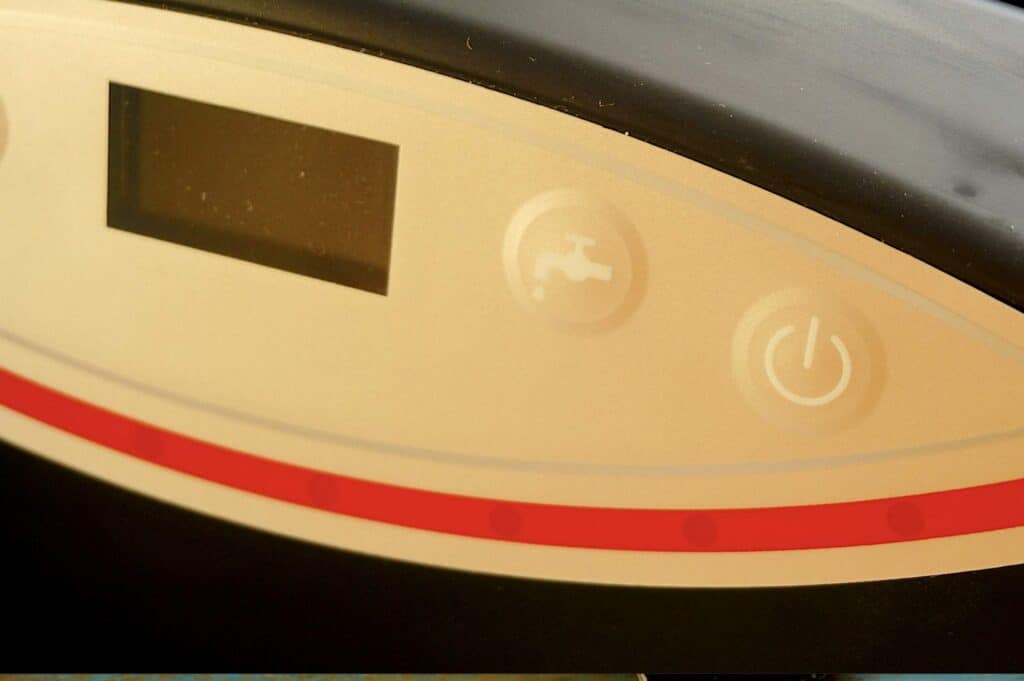
You’ll also find a drying rack plus a sponge on a stick. This simple tool allows you to periodically clean the bath itself.
You’ll also find an empty plastic bottle, a bottle of cleaning concentrate and a bottle of distilled water. Following the simple instructions, you combine the concentrate and water in the no-longer-empty bottle. Then you give that lot a shake and dispense the now diluted cleaning liquid into the machine’s bath. You’ll find MAX markers to prevent over filling.
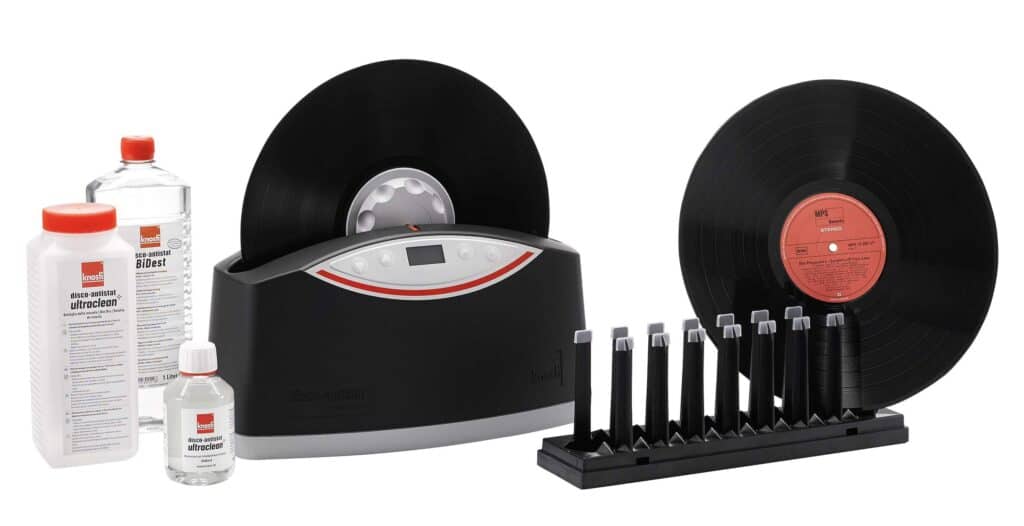
Now it’s time to grab your mucky record. Fans of the manual Disco Antistat will know that the clamp needs to be fitted onto the vinyl but viewers of my recent MkII+ review will also know to firstly remove the two rubber seals situated on the inside of each clamp half. See my review for the drama, the controversy, the blood, the screams…all that.
MOTORISED MOVEMENTS
Once the clamp is firmly affixed to the vinyl itself you lower the record into the Ultrasonic cleaner’s bath. Make sure that the cogged side of the clamp is facing to the rear because that will mesh and connect to the built-in motor – supplied by German engineering company Bosch, incidentally. Just push the clamp towards this connection, rotate the record to fully engage and you’re done.
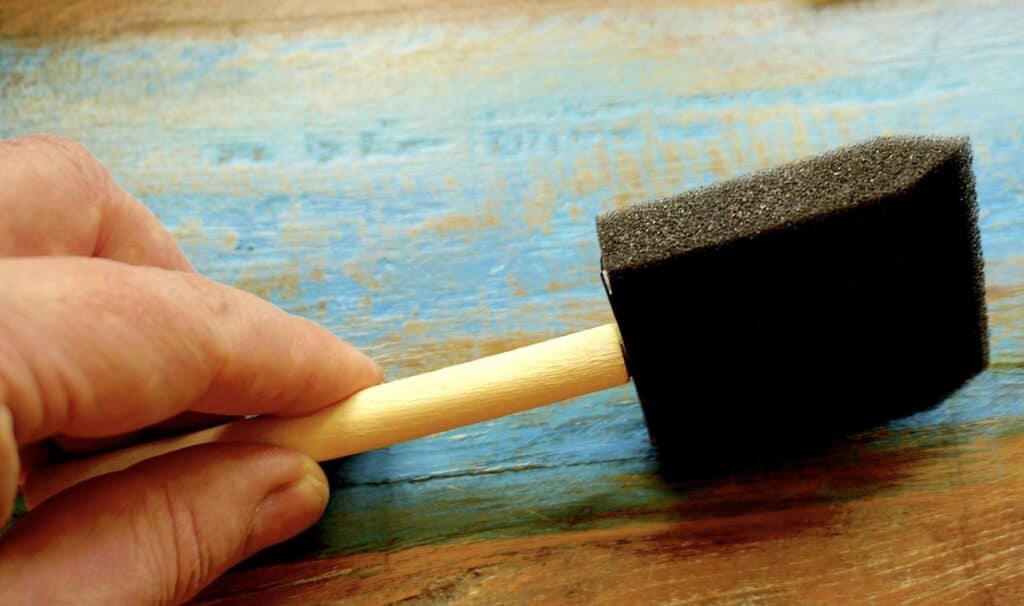
Press the up arrow button to start the cleaning process, the ultrasonic transducers will kick in and the vinyl will rotate.
I asked Knosti about the frequency rate of the internal transducers and it told me that 46kHz was selected. Any lower and cleaning effectiveness would have been compromised, any higher and the heat output would have been too high for this particular design, which I can understand.
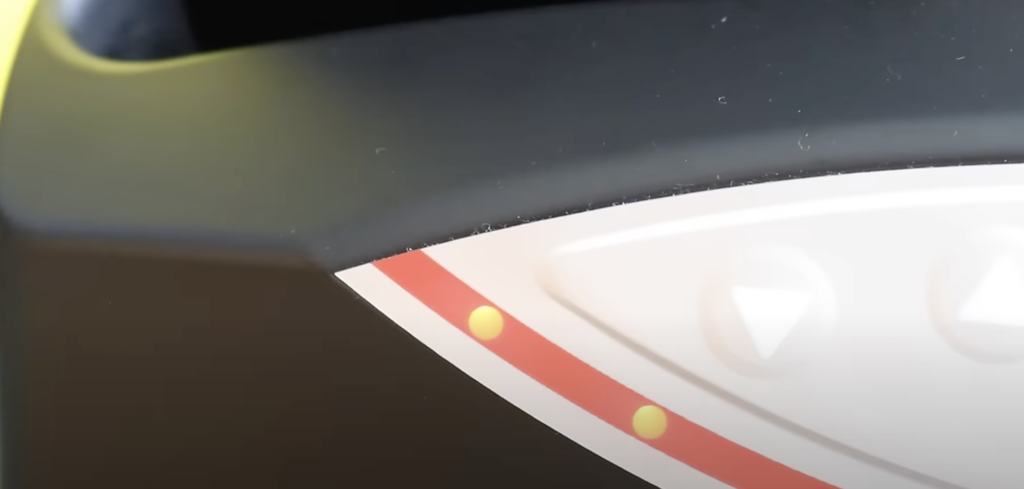
Cleaning progress is monitored by an arc of lights across the front of the chassis. In operation, you can certainly hear the cleaning operation but it’s not too loud. I’ve heard far worse, especially from vacuum-based RCMs.
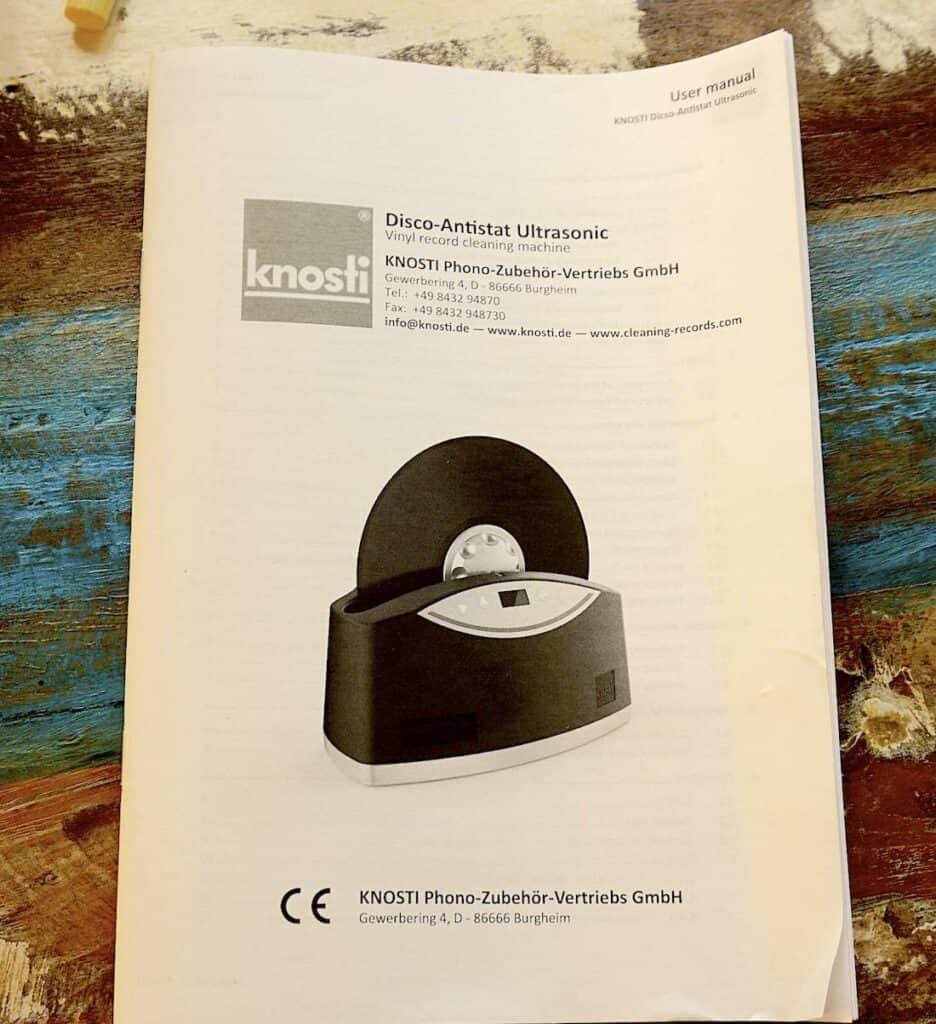
Once the cleaning cycle had been complete. Twist the clamp slightly anti clockwise to disengage the motor cog, lift the record out of the bath, drip dry a little to remove the excess water back into the bath, remove the clamp and store in the rack to dry.
DRYING…OR NOT
Which, of course, means that there is no internal drying cycle. Drying is a manual operation. Again, I asked Knosti why, and it stated that the current chassis design cannot accommodate that process.
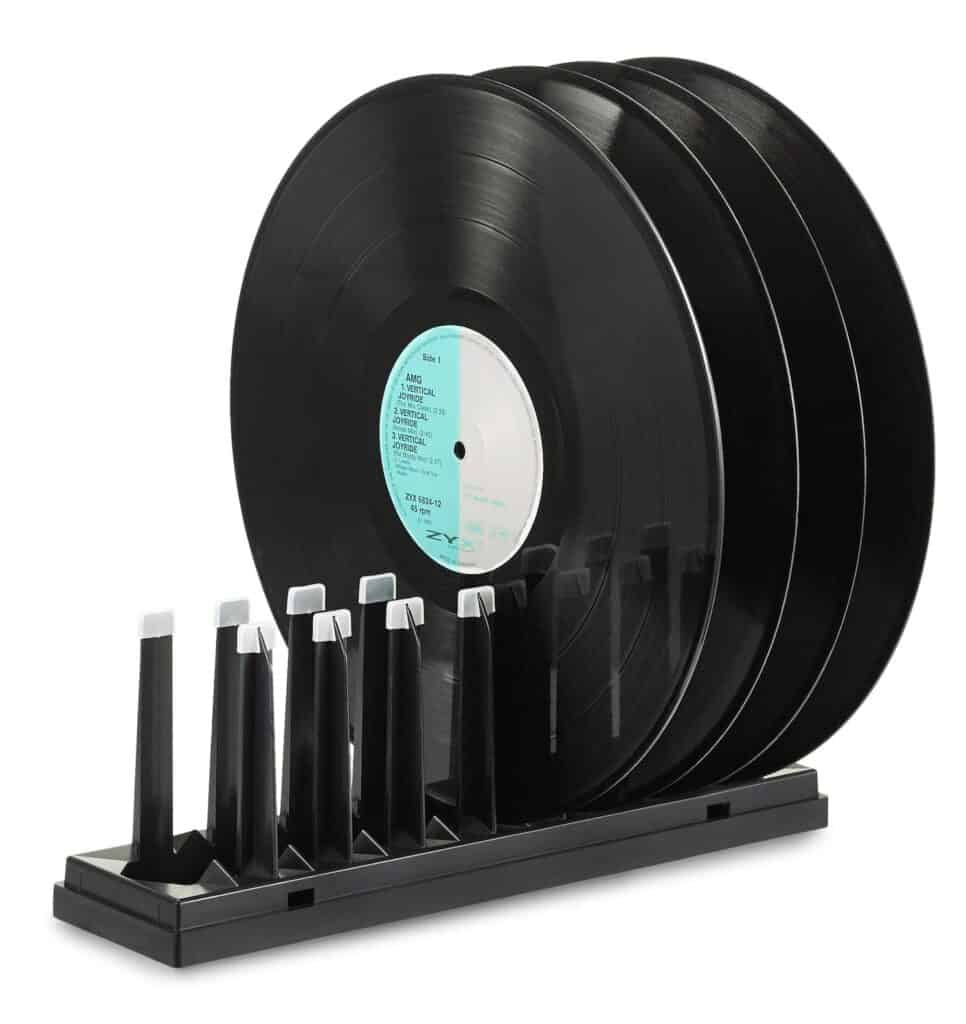
I’m sure that adding a drying cycle would have significantly increased the price point so bear that in mind. I also do know a few people who don’t like the idea of internal dryers anyway, so they will be happy I’m sure.
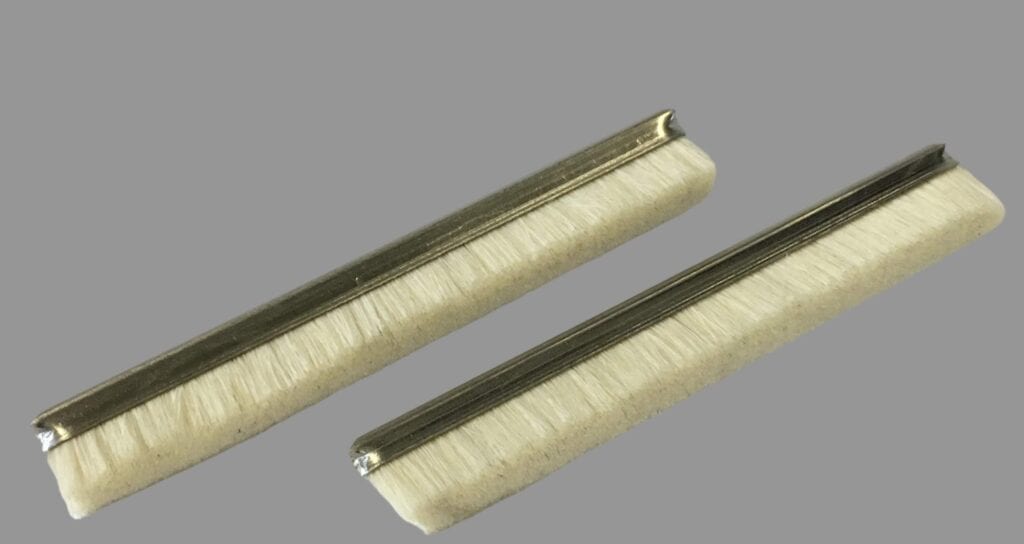
So that’s the basic tech but how does cleaner perform and sound?
SOUND QUALITY
For testing? I grabbed an original pressing of the Throwing Muses album, University on the 4AD label and played the track, Bright Yellow Gun.
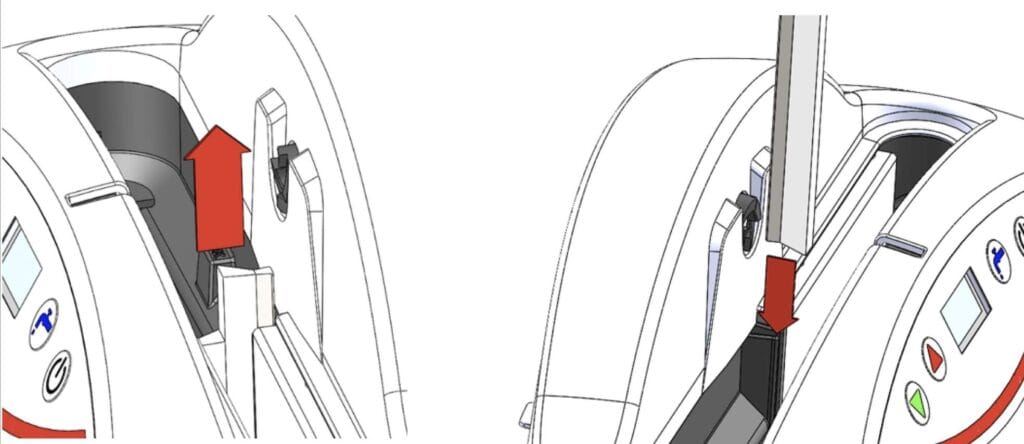
Wholly uncleaned, dusty and rather mucky. This LP was an addition to my collection that I have to get around listening to or, of course, clean so it was a perfect target.
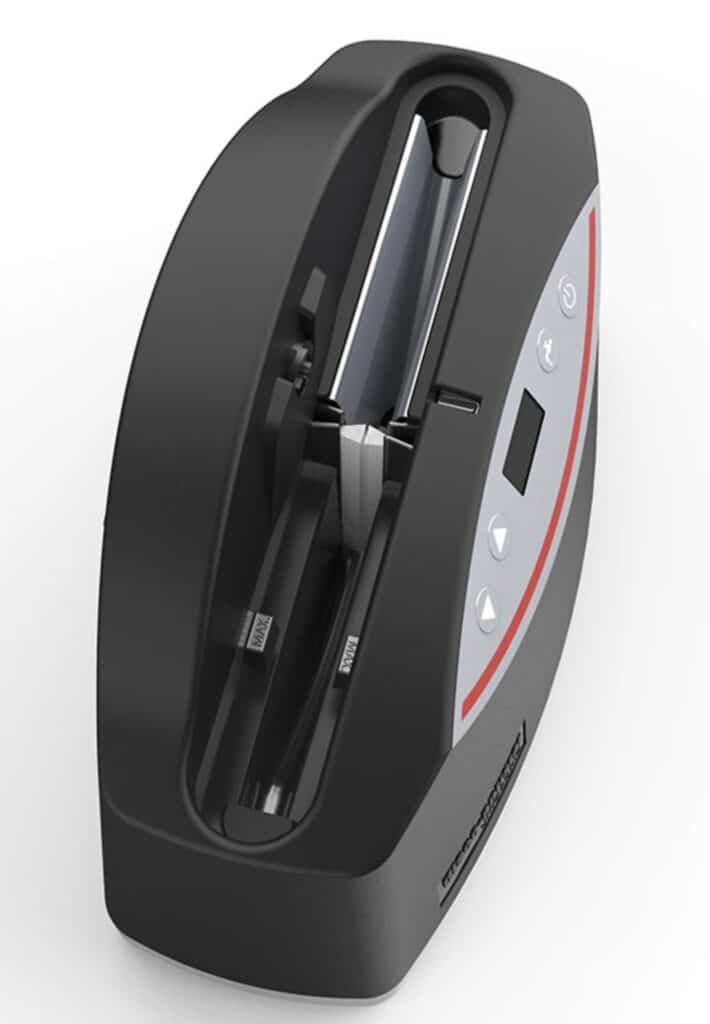
Nicely engineered with plenty of inherent clarity, it is a high-energy piece with a female vocal, tambourine, drums, bass and electric guitar. Simple, straight forward, except for some double tracked vocals dotted throughout.
Vs KNOSTI CLEANING LIQUID
To begin, before the actual machine itself, I wanted to address the supplied cleaning liquid. To hear the LP before a Knosti clean and after the LP has been cleaned.
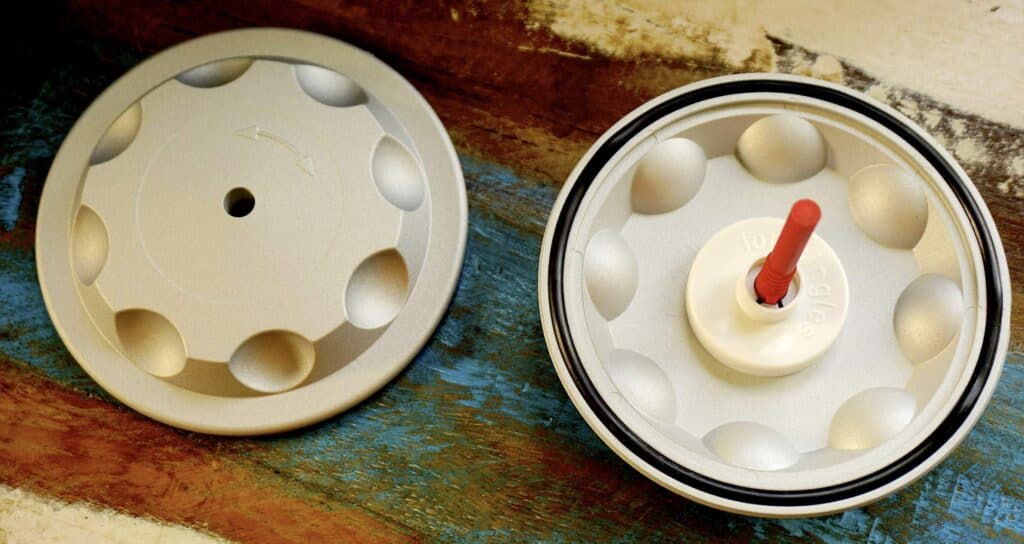
Hence, I cleaned the LP for a total of five minutes in the Knosti. In the bath was a diluted solution of the supplied Knosti cleaning liquid. That concentrate was diluted with my own distilled water – not the water supplied by Knosti. Why? Because I would need to use distilled water here for future tests and I didn’t want multiple variants of the stuff adding doubt to my test results. Also I wasn’t given too much of the stuff by Knosti.
Hence, the water became a constant, not a variable.
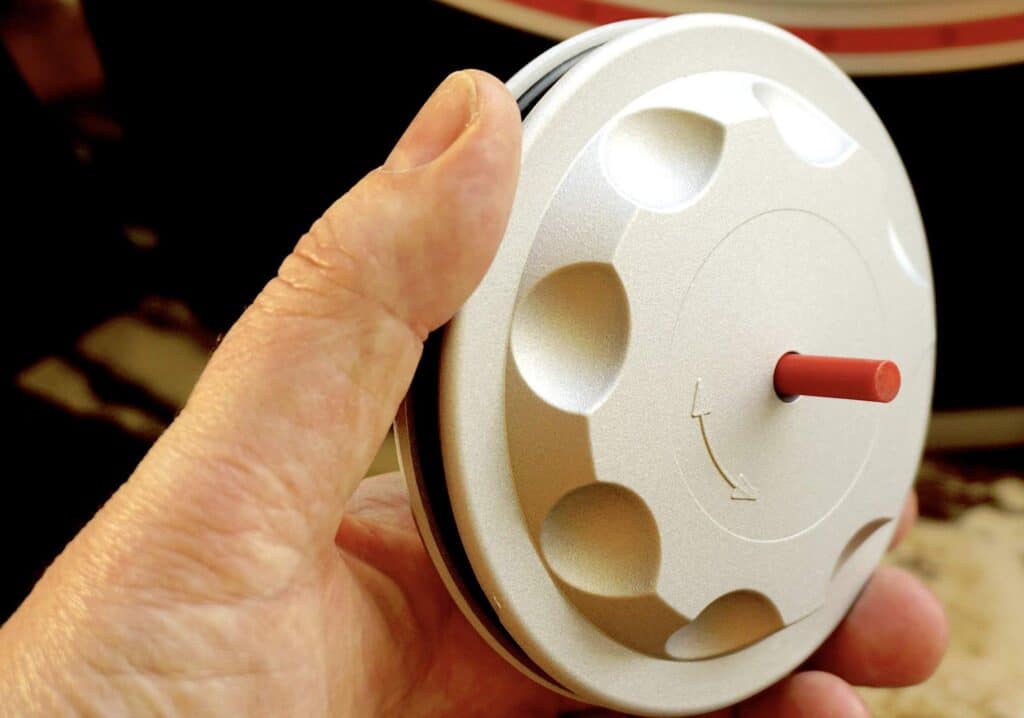
And the sonic result of using the ultrasonic cleaner with the Knosti liquid?
A definite improvement in sound quality from the original dirty LP I pulled out of the sleeve. The entire soundstage increased in size. In fact it was much more open now, spacious, the vocals offered a larger and more imposing performance. From an already impressive degree of clarity, the Knosti improved that element of the sound still further with shy instruments like the tambourine now more visible to the ear.
PUSHING THE LIQUID
Next? I wanted to see how far I could push the performance of the Knosti machine and the liquid as a combo. To remind you, I had initially run the machine across a single 5-minute cycle. I decided to up that to six, 5-minute cycles to see if anything changed. I was hoping it would.
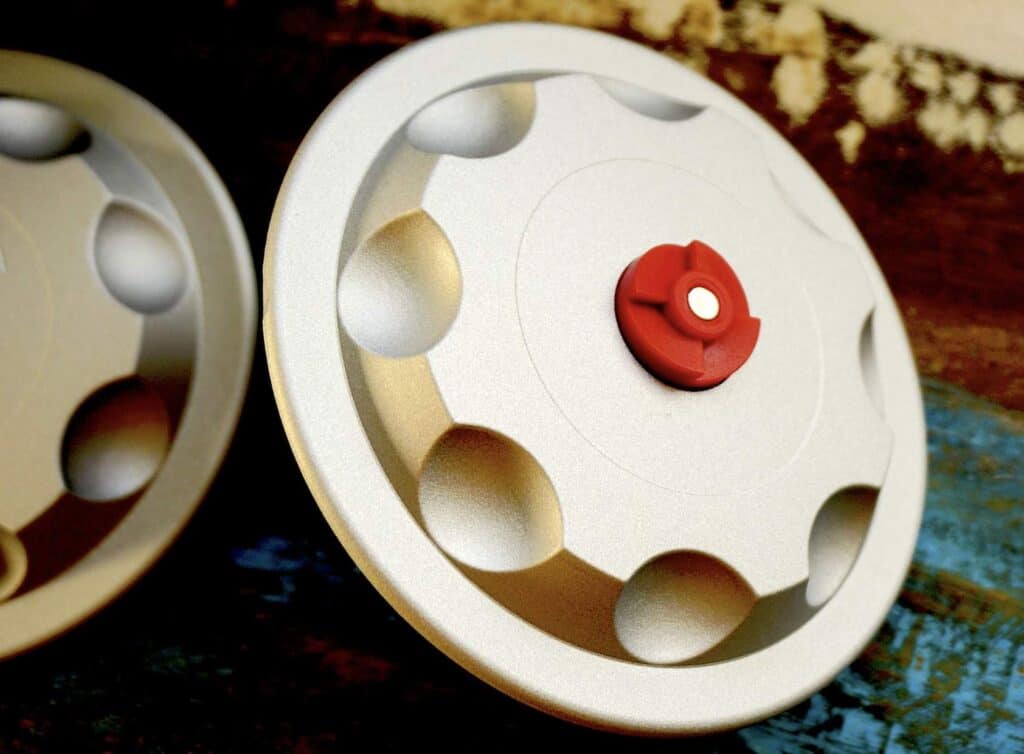
The idea being that this would see the performance levels hit a sort of plateau. That is, that any further cleans after six cycles would either bring little or no improvement. And indeed. That seemed to be the case. So I played the same track and compared the sound between a single 5-minute cycle and six, 5-minute cycles. The result? Further improvements. This time, there was an increase in focus and a solidity around the stereo image with no wavering of vocals and instrument in this area. Lead guitars sounded meaner, drums had extra punch while the bass overall was firmer and more precise.
GUNGY LIQUID?
And a slight tangent but for those familiar with the low-cost, manual Disco Antistat-included cleaning liquid and the habit of that liquid to form a residue that builds across the stylus tip? Not here. Well, possibly the tiniest of residues but that might have been from the record itself.
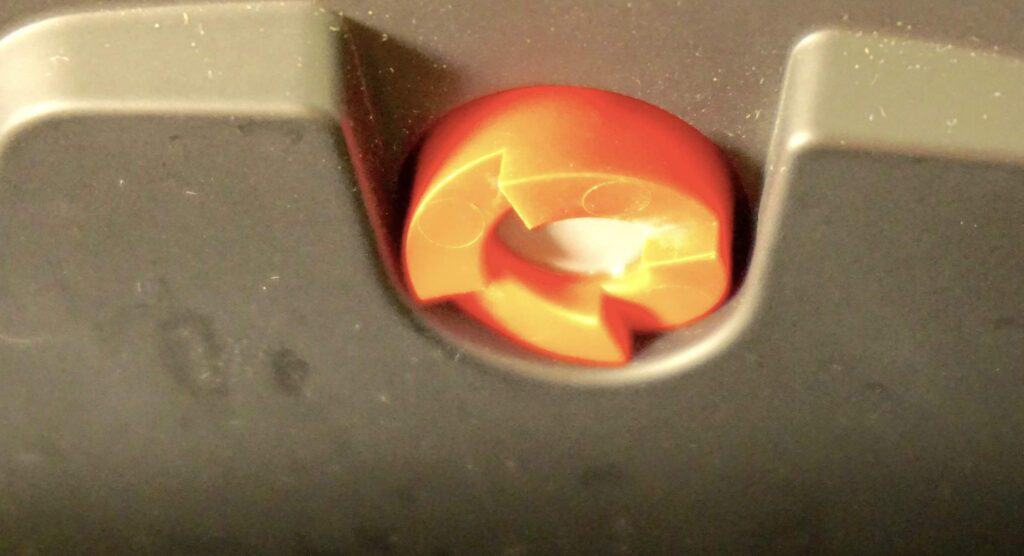
According to Knosti that might have been down to the fact that the bath liquid is constantly being filtered during the clean.
Back to this review and next? I wanted to compare the Knosti liquid with my own system. That is, a bath filled with distilled water and 7% alcohol. Plus diluted Tergitol surfactant with added Glycol applied directly to the vinyl surface with the aid of a Kabuki brush. If any of that raises eyebrows or sparks confusion or triggers questions? Check out my cleaning guide here, on this website, where all your questions will be answered.
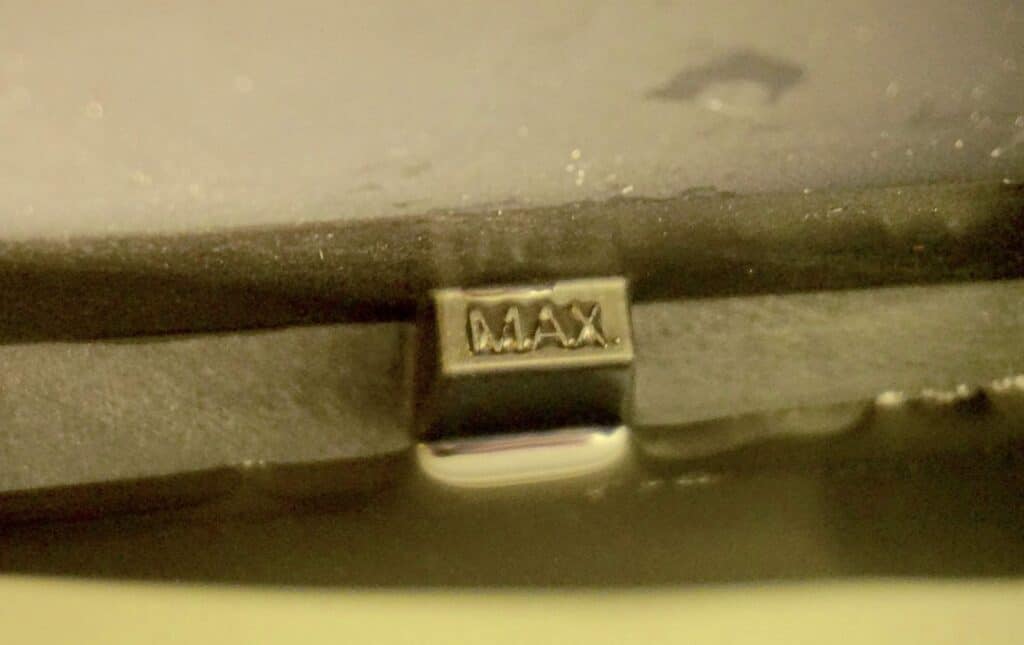
And as a general point, after each cleaning session here and for the other tests mentioned within this review, I added a rinse cycle to remove any final surfactant from the vinyl surface.
ALCOHOL
Now Knosti will no doubt react badly to me placing alcohol in their cleaning bath. Even at this low amount of 7%. They advise against using it and declare that you should only use the Knosti cleaning liquid.
Is that because they want you to buy their cleaning liquid to maximise profits? Possibly. I would do that if I was in their shoes. Or is it that they want to keep within their own warranty guarantee? Again, possibly.
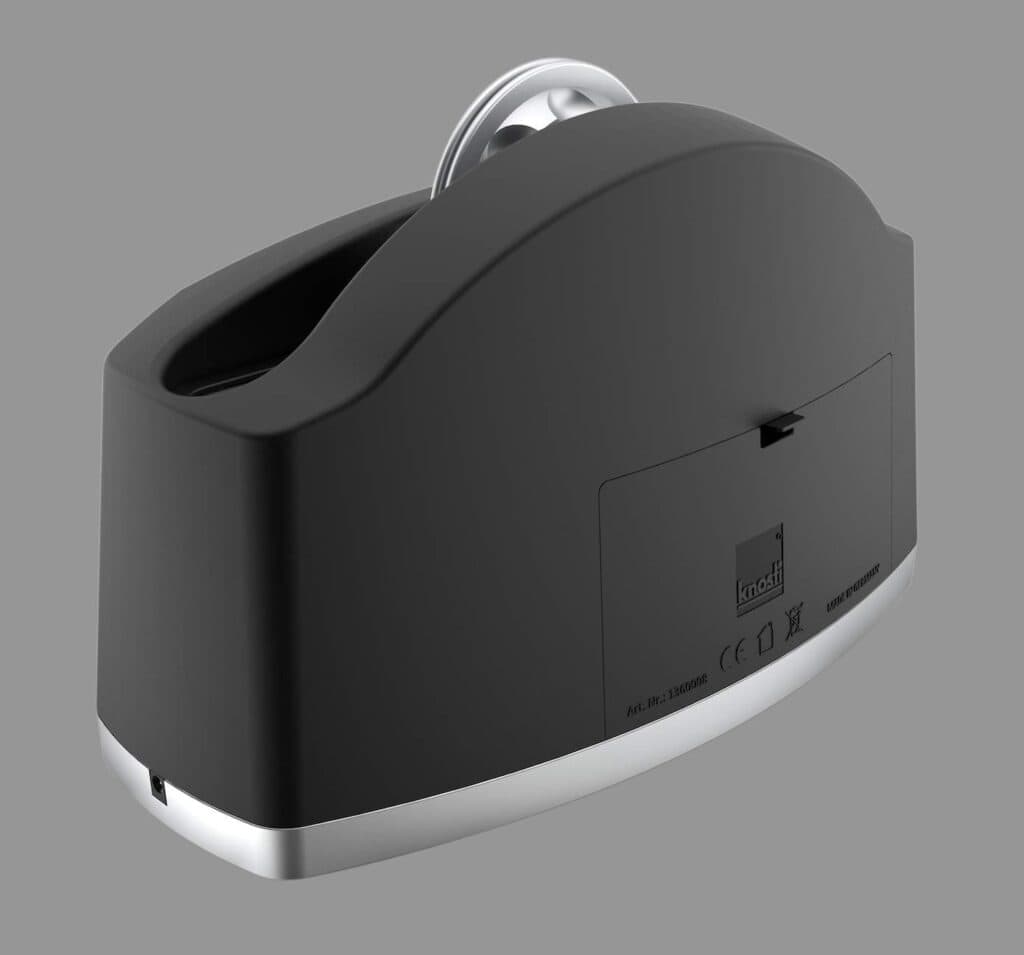
But then I heard similar language from Audio Desk when I used my alcohol-based liquids in their Pro ultrasonic cleaner and I did so for what, two years? More? Without any adverse effects. So I will take my chances, especially if the sound improves.
To remind ourselves then? The test disc has been cleaned over six, 5-minute cycles in the ultrasonic cleaner using their concentrated liquid in my distilled water. I then drained that Knosti liquid, cleaned the bath, then replaced it with my own bath liquid recipe, then applied my diluted surfactant to the vinyl surfaces for just a single 5-minute cycle to see if I could hear any differences.
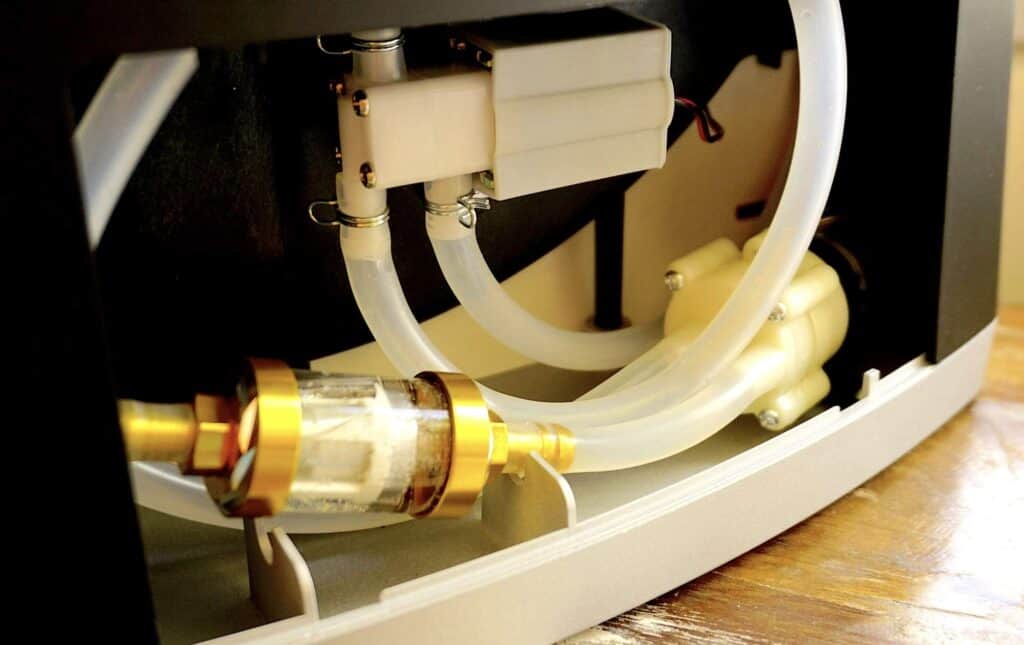
And yes, I certainly could. Via my concoction, the vocal was now a step nearer to the ear, larger in size and more expressive. Instruments now had gaps in between each, mandating that more fine detail could be heard. More business on the drums could be tracked, the tambourine was clearer, cymbals offered better treble insight. Overall, the music was tonally more realistic.
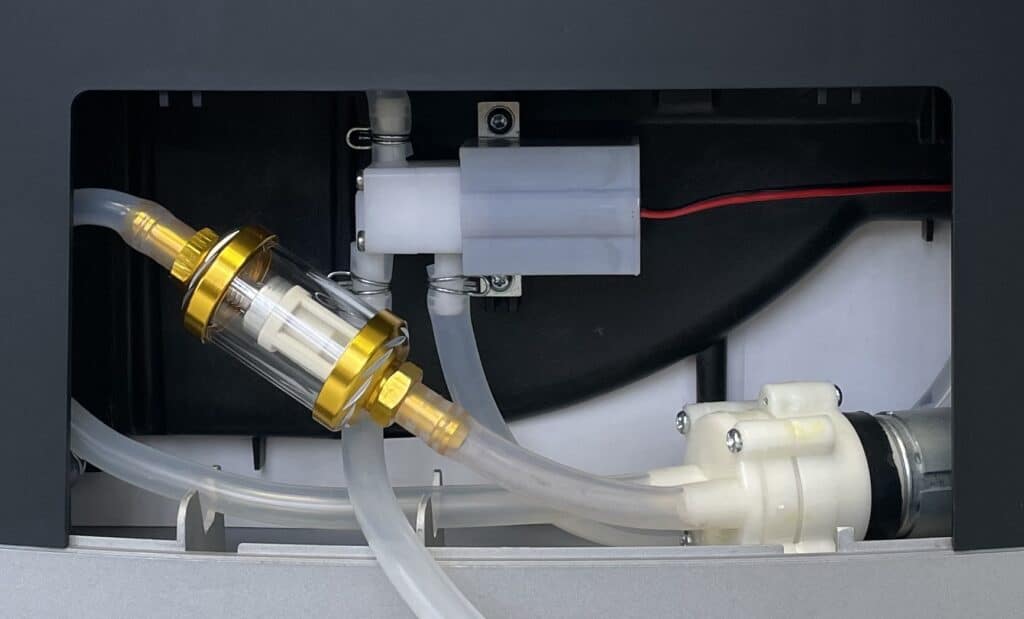
If anything, the Knosti liquid added a slice of bass emphasis that reminded me of the performance I heard using the Triton surfactant a while back. I don’t know if Triton is part of the Knosti mix. Probably not but that’s how it sounded. The Tergitol and alcohol application provided better balance and neutrality plus better detail right across the frequency spectrum.
VS DISCO ANTISTAT
Next? I cleaned an original pressing of the Golden Palomino’s Drunk With Passion (anyone out there remember the Golden Palominos?) using the famed manual cleaner this time, another Knosti product, the Disco Antistat. I wanted to see if there was a performance difference and, if so, how.
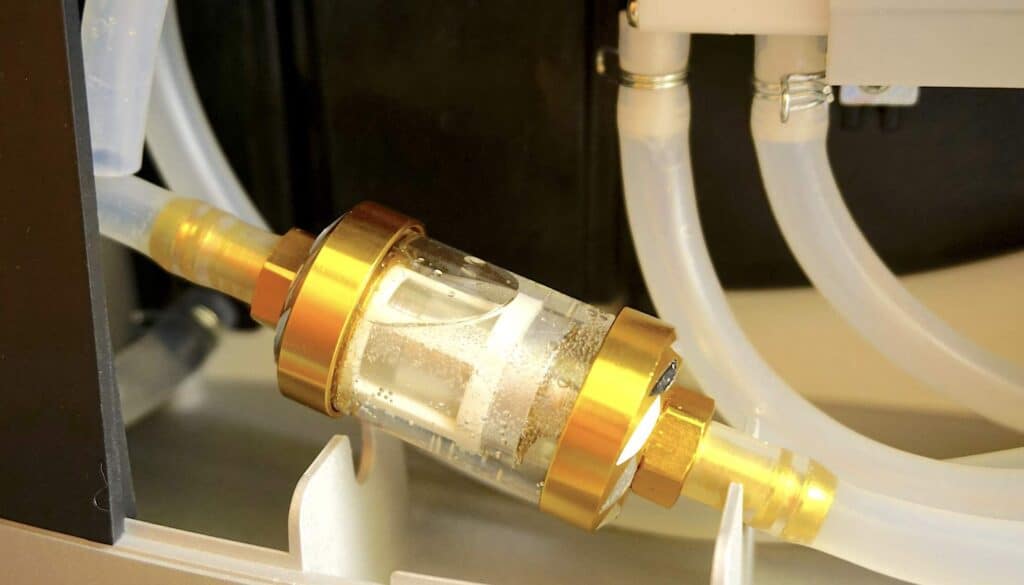
I used the same type of liquids, the same surfactant technique, the same type of bath water and rotated the record in the Disco bath 30 times to the right and 30 times to the left and then allowed the cleaned record to dry. That was one cycle. I cleaned the record spanning six of those cycles. And then I listened.
I then cleaned that same record in the Knosti Ultrasonic cleaner as earlier, via a single 5-minute cycle rotation, see if there was any improvement in terms of sound. I listened to the track, Alive and Living Now a production with wide open spaces, various electric guitars, bass, an airy sound to the drums plus noticeable cymbal work, male lead vocal and ethereal female backing vocals with backing harmonies.
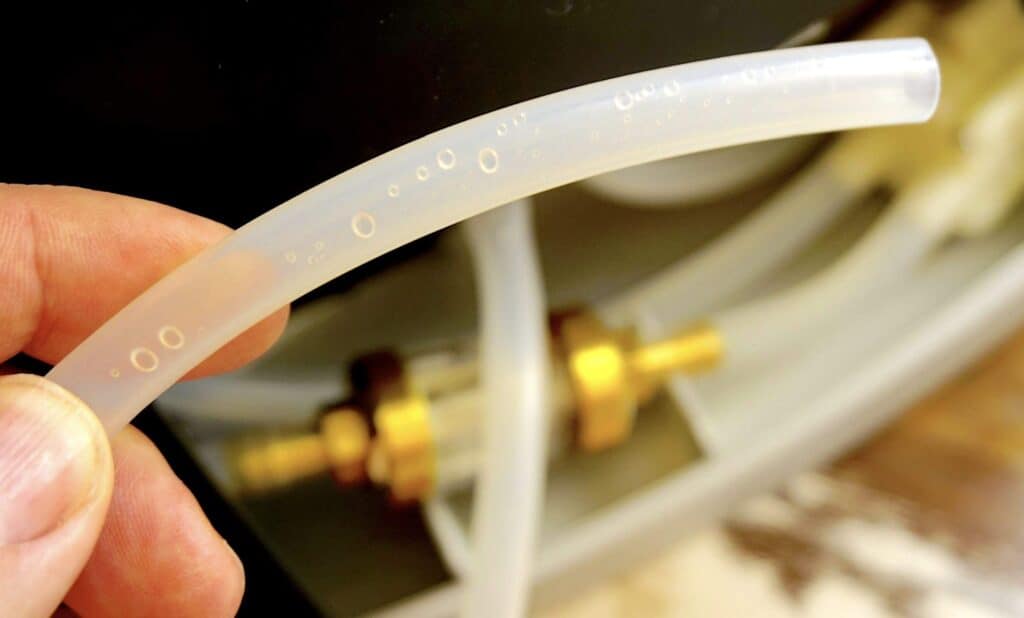
After cleaning with the ultrasonic cleaner? Well, even more air was pushed into the soundstage which increased in size left and right. It sounded like the band were playing in the middle of the Prairie now, such as the spacious feeling to the sound. The lead vocal had a reverb bubble surrounding it while there was a greater balance to the overall presentation in tonal terms.
After the Disco Antistat play, there was still a slight edge to the upper mids. That had gone now via the Ultrasonic. Backing harmonies sounded richer, the female backing sounded softer while the drums had a big, epic presentation. In general sonic terms, the Ultrasonic cleaner was a few rungs up the ladder over and above the Disco Antistat.
VS RCM
Again, I wanted to see how this ultrasonic machine faired against a quality vacuum-based RCM.
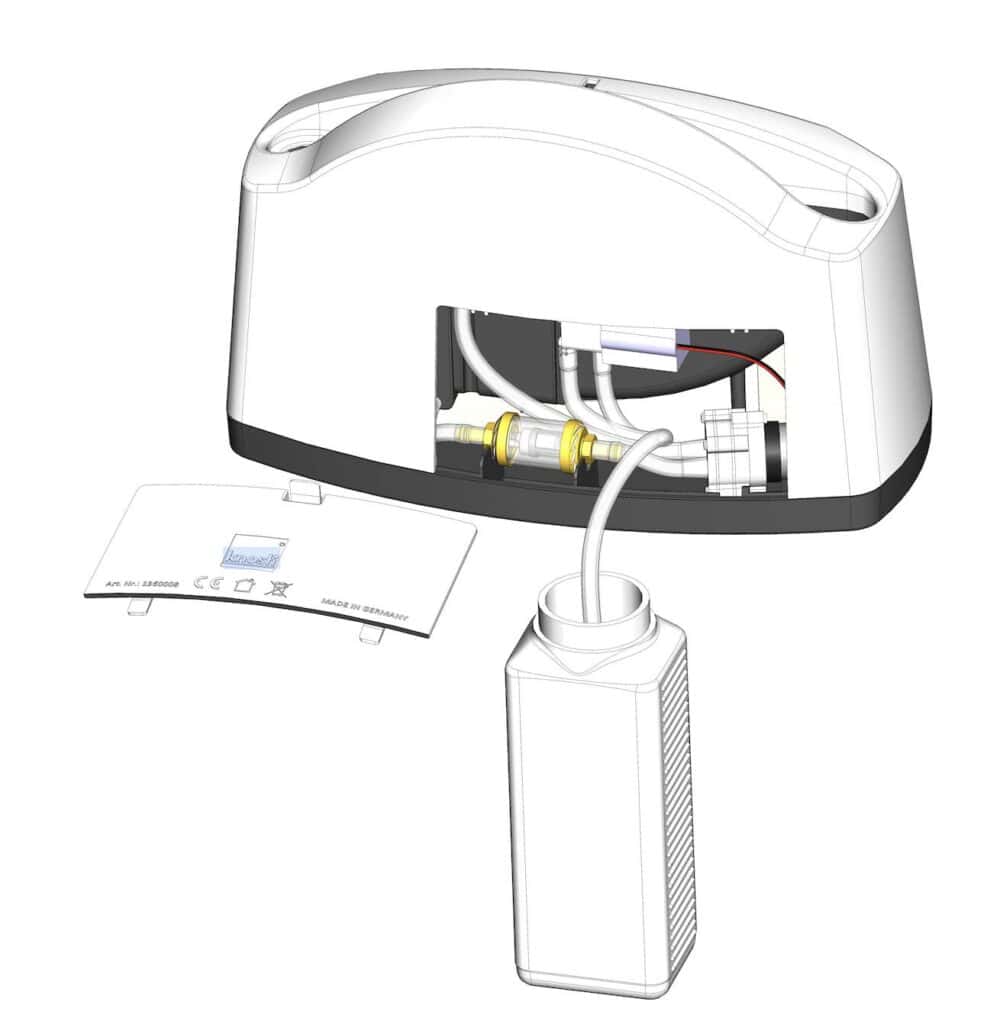
I picked the best RCM I’ve ever heard for this test. I picked a Loricraft. Again, same liquid types and quantities were used to maintain that constant and I used an on-disc surfactant when cleaning with the Loricraft.
My test LP was the original Verve pressing of Mel Torme and the Meltones, Back in Town and the track It Happened in Monterey. On this track, the stereo image was filled by Torme’s vocal plus the massed harmonic ranks of the Meltones plus drums. To the left and right was brass, electric guitar, bass and vibes plus the odd bit of work on cymbals and a cow bell, of all things.
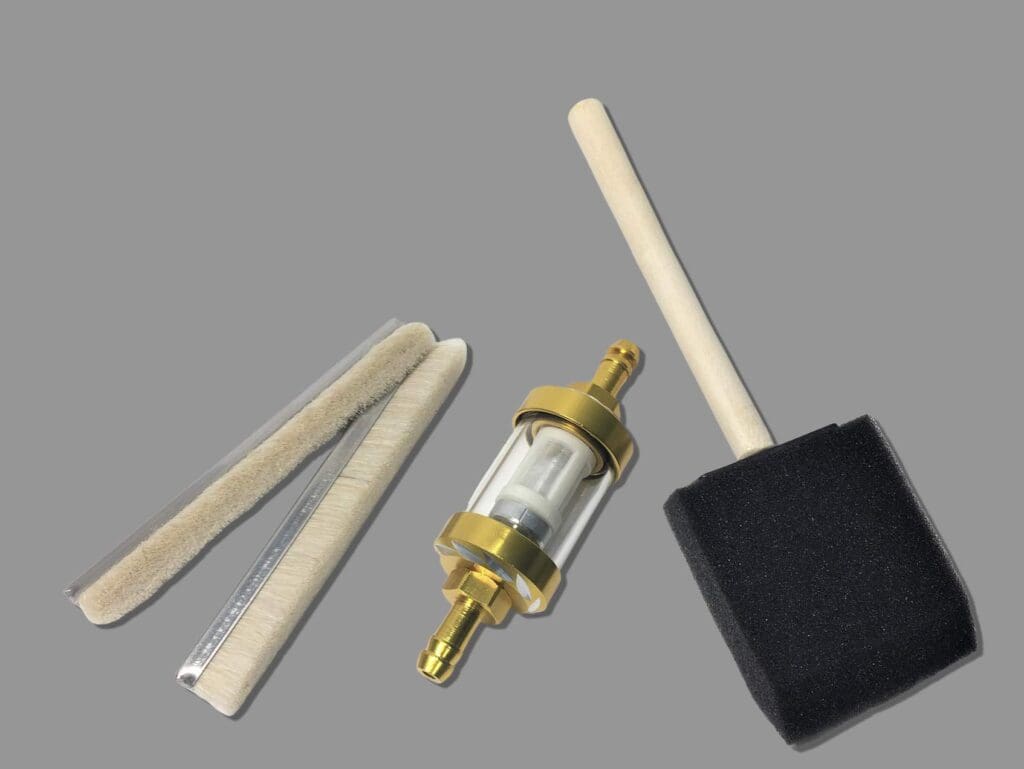
To clean, I used the bow technique. That is, flooding the horizontal vinyl surface with cleaning liquid – my Tergitol-based liquid, in this case – applying the Loricraft brush to the now rotating platter and creating a wave-like bow on the vinyl surface which served to dislodge and remove grime from the groove as the bow wave swirled and tumbled, agitating the grooves. I used this technique while rotating the platter clockwise and anti-clockwise. Then I dried the vinyl surface. That served as a single cycle.
Again, I wanted to push the Loricraft to a plateau so that my test record was no longer improving in sound terms with subsequent cleans. Again, six cycles seemed to be the ideal figure here.
I sound tested that result then cleaned the record in the Knosti ultrasonic cleaner for a single cycle to hear any possible sonic changes.
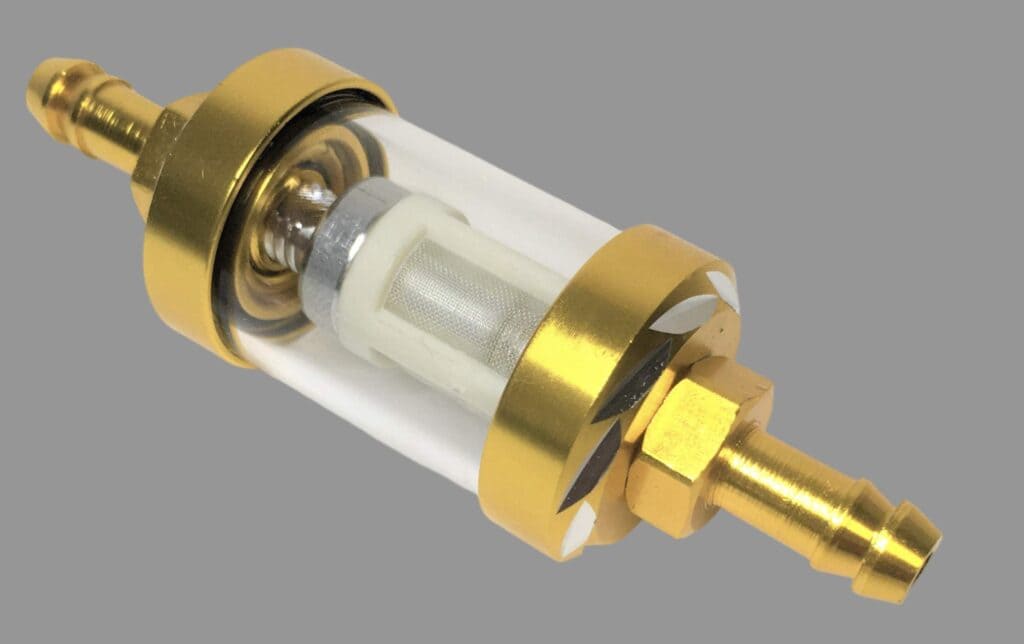
As for that sound? My first note was the increase in volume for the same gain setting, so I had to reduce the gain by a click. I then noticed the enhanced clarity. The soundstage really did sound scrubbed, dusted, polished and thoroughly pristine. The treble output around the cymbals offered a brassy ting when struck, vocals seemingly had a boost in pace and zip while bass offered a new focus.
VS DEGRITTER
Finally, I wanted to place the Knosti in some sort of context so decided to compare it with the Degritter Mk.II, a machine that costs around two and a half times the price at over £2.5k. This time? I did a switcheroo and cleaned my test vinyl in the Knosti for six complete cycles to reach that sound quality plateau. That is, I applied my diluted surfactant to the vinyl surface with a Kabuki brush, cleaned for five minutes as one cycle but proceeded to complete six cycles in total.
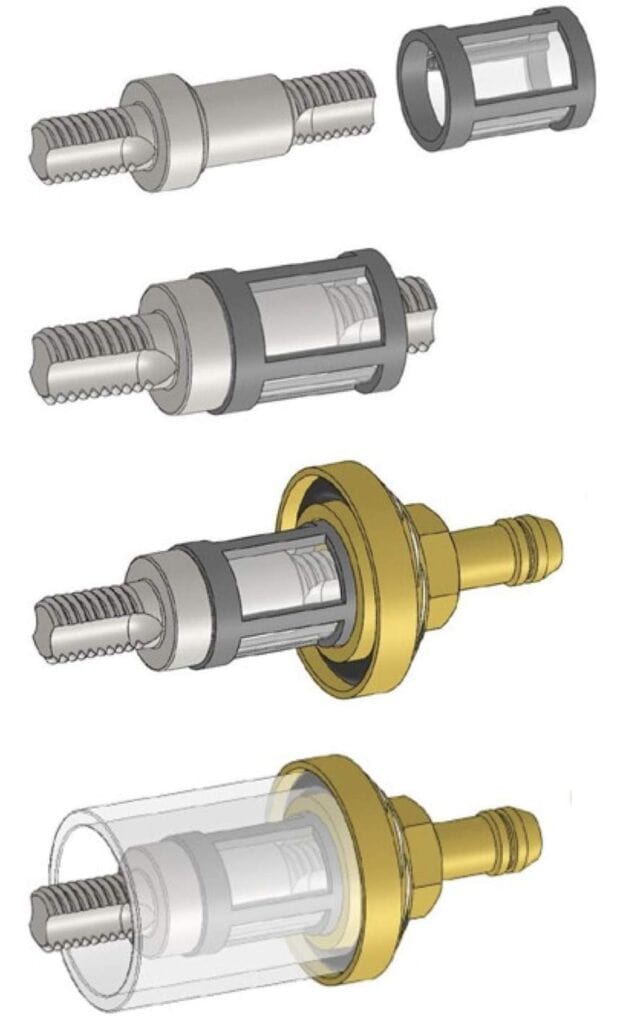
Then I cleaned the vinyl in my Degritter M.II for a single heavy cycle which spanned something like 13 minutes for both a clean and drying programme. That was one cycle and I stayed with that single cycle to see if there were any differences in sound quality.
- For a test LP? I chose Sarah Vaughan and Ronnie Scott’s Presents Vol.2 on the Pye label and played the track Blue Skies. Vaughan was backed by piano, upright bass and a stick and brush-based percussion.
It was not surprising to hear a devastating sense of imagery from the Degritter and in all directions. There was a real 3D picture created by the Degritter from front to back and top to bottom, enhanced bass and the final high-pitched crescendo from Vaughan revealed a more recognisable vibrato.
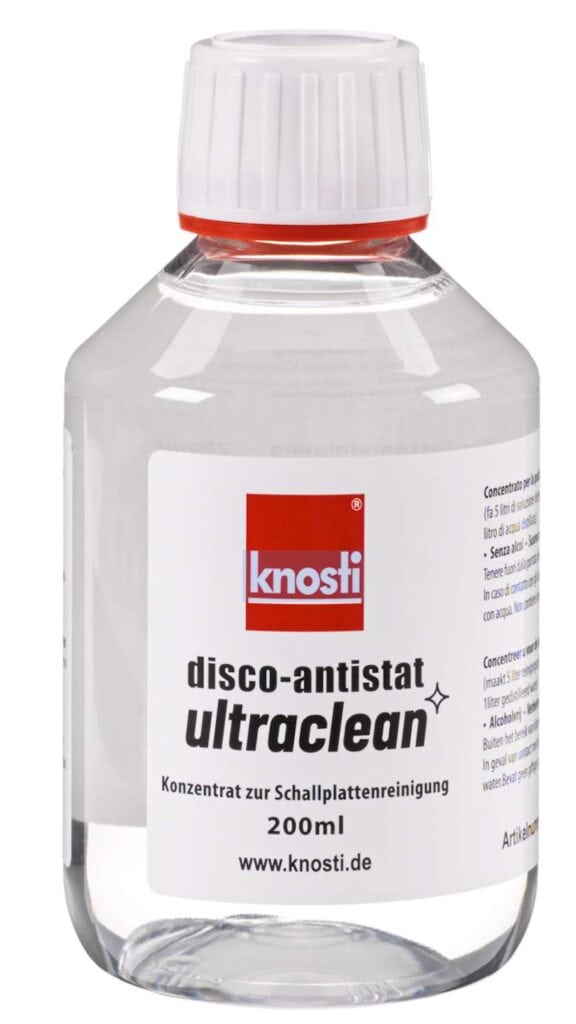
Despite all of that though, these were luxury fiddly bits. Impressive. Stunning, even. All of that sure but, even so, the Knosti, for the price was now even more impressive after hearing the Degritter because, although the Knosti could reach the same performance heights as the Degritter, all of the basics were covered by the Knosti machine. All of the important bases were touched upon. Every frequency was enhanced, discipline was enhanced, clarity, detail, transparency. All there. For the asking price? The Knosti performed superbly.
CONCLUSION
I have to say that I was very happy with the Knosti Ultrasonic Vinyl Cleaner. It offered a pleasing familiarity in terms of its aesthetics, looking very much like the excellent Disco Antistat, the interface was easy to use and worked well, potentially troublesome operations like draining the bath were easy to accomplish and while the use of cavitation and the internally fitted brushes may seem like overkill, this double action did prove to work well in terms of vinyl cleaning. And as for the sound? Top notch, especially if you run it with a good record preparation treatment.
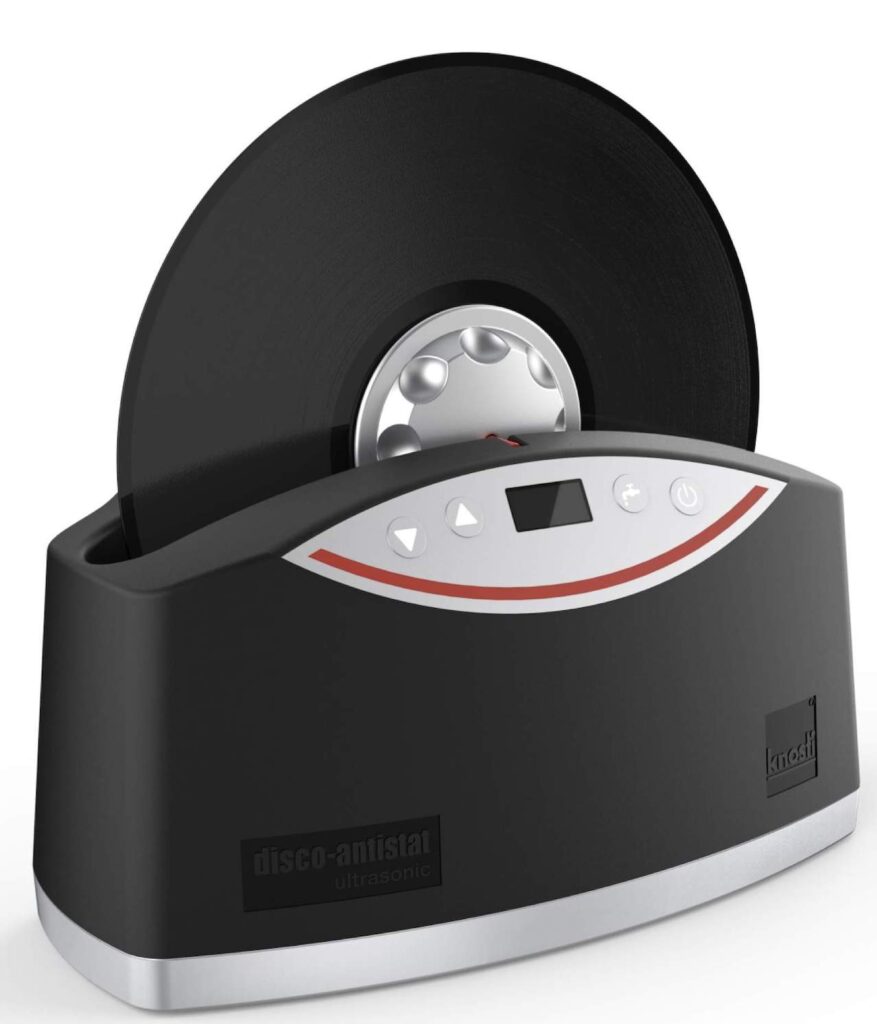
I rate the Knosti Ultrasonic Cleaner above any manual system you care to mention, above any RCM vacuum system you care to mention and many competing ultrasonic cleaners too. Of the units I have personally reviewed, only the much more expensive Degritter can challenge it. If you are looking for a high-quality ultrasonic vinyl cleaner, you’re happy to invest money into the problem but don’t want to spend too much then as far as I’m concerned, the Knosti Ultrasonic Cleaner is the only choice on the market. A brilliant little machine.
KNOSTI DISCO-ANTISTAT ULTRASONIC VINYL CLEANER
Price: €1,249
Website: www.knosti.de
GOOD: compact, easy to use, relatively quiet, sound quality
BAD: nothing
RATING: 9




Hi Paul,
Congratulations on an excellent comparative and operational review of the Knosti Disco Antistat Ultrasonic. Two points arise.
1. The O-ring saga lingers on. When I wrote to Knosti about my TEFLON O-ring solution they showed remarkable disinterest and merely referred back to you and your experience. I have had no problems since replacing the O-rings with TEFLON ones.
2. Regarding the cleaning liquid, Knosti changed from the use-as-is(undiluted) to the diluted (40 ml per liter distilled water ULTRACLEAN) in parallel with the introduction of the Antistat Ultrasonic. My copy of the Disco Antistat Mk ii was supplied with ULTRACLEAN. I dilute jt with ultra pure glass distilled water. Knosti does not say whether there is a difference in the chemistry of the two products, beyond the absence of alcohol.
I use the Disco Antistat Mk ii Ultraclean as a pre-clean before finishing with a distilled water only cycle in my Degritter Mk ii.
Something completely different. I have had a mail from Degritter about an upgrade to the Mk ii ultrasonic cleaner. They have also released a Mk ii version of their cleaning fluid.
Regards,
Roy Dick
Hi Roy. Many thanks. Knosti did confirm to me that both liquids are the same – bar that alcohol removal.
Hi Paul,
Why are Knosti hooked on their problematic O-rings. Is €14.27 per TEFLON O-ring too much for them in a product costing around £1060 ? Your “solution” is for me “no solution” and the fact that you did it in your review invalidates the rating that you gave to the product.
No idea, Roy. You’d have to ask them. And I could only review and mod what was in front of me. If my solution doesn’t work for you then I recommend that you find your own or avoid the product and go elsewhere. Don’t let it stress you out 🙂
Hi Paul,
I have already informed you that have long ago changed to TEFLON O-rings which has solved the clamping problem completely.
The fact that a £1000 product requires “modification” to correct a design problem is beyond comprehension.
Hello
I’m in the US and after receiving your previous reply to my quesion, am struggling to find Teflon O rings 94 mm x 3 mm ( by the way,is that 94 mm inner diameter or outer diameter?) And does it have to be Teflon or could they be Nitrile ?
Regards
Guy
Hello Guy
The O-rings must be TEFLON (My experience is only with it). They are round in section and 94 mm inside diameter. One American supplier is Wyattseal.com . There may be more. Try Googleing “Teflon O-rings”.
Regards,
Roy Dick
Great review,many thanks.
So, the price of ultrasonic cleaners is coming down,but paying over £1k for a machine to clean my small vinyl collection would not be cost effective,as I only have around 400 discs,and they have all been cleaned with my mk2 Disco Antistat, using your cleaning mixes,without Tergiclean, but with Ilford Ilfotol. The only thing that takes a lot of time,is the drying time which ranges from half an hour in the warm Summer weather to 4-5 hours in the Winter in my conservatory. I tend,therefore, to only clean new or used albums in the warmer weather,after buying more vinyl from a local shop that sells used vinyl. They do have one of the expensive cleaning machines and all their used vinyl is cleaned before sale. Having bought vinyl from sources further away from me,even though they have been cleaned( I have been assured by the vendors), I have still found an improvement in overall sound quality after using my Mk2 Disco Antistat as well. Now, the sources ,further away from me use the cleaner that coats one side in cleaning fluid,then sucks it up with an arm that ‘play’s the record and sucks it out of the groove as it moves across the surface of each disc. I don’t know which make/model of cleaner they use. Another dealer uses the Degritter and cleaned a brand new disc for me as I could not get it to sound just right,even after use with the Disco Antistat Mk2. However,there was no change in sound,so they replaced the disc as it was obviously a faulty pressing. First new faulty pressing I have had in years,whereas 20 years ago there were more faulty pressings around. I ,now, tend to buy used vinyl as the prices have gone up considerably in the last 18 months or so. Cheers Ian
Hi Ian – thanks very much. You either might want to consider grabbing a low-cost/2nd hand RCM to work as a combo with your Disco to speed up the drying and improve sound further (see my RCM guide) or wait for my Humminguru review which I hope to sort in a month or two which is even lower cost than the Knosti ultrasonic.
Hi Paul,
I have only just seen your comment from my post from November 2024!!
So,is the Humminguru now the best RCM for the money ?
Cheers
Ian
Hi Ian
‘Best’? Check out the Humminguru review because I do compare and contrast with other tech. So hopefully you can judge that. And…the Internet, eh? Nothing is old on the Internet 🙂 Imagine if I had replied to you in a magazine, you could have had to have rented a fork lift truck to move your back issues and over three weeks to filter each issue to find my reply.
Ok, will do,thanks.
Judging by the amount of junk( my Wife’s words,not mine!! ) in my office,I take after my Mother in that I rarely throw anything away. To be fair, my office only has one computer in it, but also has 12 pro audio speakers,three complete pa systems,amplifiers,covers and loads of wiring so, maybe, I am not the best judge ?Cheers Ian
…sounds like my office 🙂
Hi Paul,
The Knosti fluid is supposed to have anti-static properties. How does your IPA + TergiKleen + Propylene Glycol formula compare?
-Kurt
Hi Kurt – I much prefer my system to the Knosti liquid, in general terms. And merely cleaning a record in a machine like this will increase static. I recommend a third-party tool for that, no matter what the brand of cleaner.
Can the rotational speed (RPM) of the record be adjusted or slowed with this machine, preferably decreased?
No…but I’m not sure why you would even want that. Companies who create bespoke ultrasonic vinyl cleaners tend to juggle the hardware to do the best job considering the build budget. Rotation speed being just one of those variables.
This is why: https://thevinylpress.com/precision-aqueous-cleaning-of-vinyl-records-3rd-edition/
I try to help HiFi users out of the goodness of my own heart, I’m not paid to do this. In fact, I lose money doing it. If/when I can find a few minutes to spare during a busy working day, I will attempt to answer a couple of the 7-8 questions I receive daily, via the dozen or so social platforms plus website, YouTube channel, Facebook group and more, that I currently occupy. But when someone dumps a link on my doorstep, sending me to a 200-page or so document whereupon I’m supposed to somehow fathom your point in amongst a week and a half’s reading? Then I draw the line. You’ve lost me, sorry. Good luck with your search.
My profuse and sincere apologies! I certainly did not intend to add to your burdens, really! I assumed and, in retrospect, shouldn’t have, that you were likely already familiar with Neil Antin’s work in this regard. Frankly, I do not possess anywhere near the scientific expertise or acumen that he brings to this and, as a result, don’t fully comprehend all the science he employs to ultrasonic record cleaning approaches. That being said, when you do have the time to devote to this treatise, I strongly recommend it, perhaps with a glass of your favorite beverage because it is definitely not an easy read, especially for folks without a scientific background. I find myself reading and re-reading it over and over again in an attempt to grasp the finer points. One of many of those is how RPMs affect the cleaning efficacy of ultrasonic cleaning machines, which you can find in Chapter XIV.6. From what I’ve seen of this new Knosti 2.0 URCM, a slower RPM might be an improvement. That’s the reason for my initial question. Cheers!
The machine managed to clean records further improving the sound that 2-3 session with the manual Knosti, or two sessions with a vacuum machine, could not. This was in combination with distilled water and a rinse off with distilled water in my (now extra) manual knosti. In terms of cleaning, it is a fantastic device.
However, the death grip is a baffling design flaw. Now matter how gently I attach the clamp, rotation in the machine plus the combination of water again rubber creates a seal that makes it unusable as-is. Removing the rubber rings solved it. Hooray, now we’re cooking! Until you put a thinner record in. The screw thread is designed to accomodate the thickness of the rings, and thinner records do not allow you to tighten that sufficiently. The result is that the spindle rotates but your record does not! I will try the teflon o-rings suggested, and will complain to Knosti directly.
Brings me to another design flaw: the manual machine has you fill up the tank until the brushes. Water level is even throughout the process. The ultrasonic generates bubbles on only one side of the tank (where the red tab is). This displacement causes water to rise several centimeters, causing you to soak your label if you filled the tank up to max level indicator (even with a record in)! The instructions are therefore misleading and I wrecked three labels (thankfully flea market finds) before I figured out a solution: fill up the tank some, start a wash and add water gradually until the side where the bubbles are generated (the higher side) reaches the start of the run-out groove. Each wash will take a few seconds to get the level up, but you will spare your labels.
5 stars for the cleaning, 1 star for the design flaws that require all this improvisation from customers that paid a tremendous price for a machine.
Hi Vincent,
As you found, removing Knosti’s O-rings is no solution when thin LP’s (such as Mercury’s 1956 1812 Overture) are imvolved. I have had no problems with LP’s, thick or thin, since changing to Teflon O-rings.
Hi Roy
Well, I finally received the Teflon O rings.Wyattseal had to have them made up as a special order ( min $50) . I installed them in the crank system and as you stated,problem solved! Thanks again. It’s perplexing why Knosti ignore your findings given the obvious answer to an obvious problem. I also note that Humminguru have just introduced their own version of a manual spin cleaner..and at a mere $89! From a cursory glance, it looks far better designed and fabricated.
Cheers
Guy
Hi Guy,
Has anyone reviewed the latest $89 manual spin cleaner from Humminguru, etc, please ?
Cheers
Ian
Hello Ian
Not that I’m aware of but just watching the video the company has produced answers most questions. It’s clearly well designed and fabricated. I’m sure they’ve looked at all the competition and bettered them all. Along with low price of $89 I’ve no doubt it’ll be a winner for those in the market for such an item. I only use the Knosti ( with modified O rings ) for my initial soak/wash,then it’s Paul’s manual method and concoctions followed by a good cleaning, rinse and drying in the ultrasonic. You can go down the proverbial rabbit hole with vinyl cleaning. I’m happy with the outstanding results from the above method and very happy to stop going down that hole!
Best
Guy